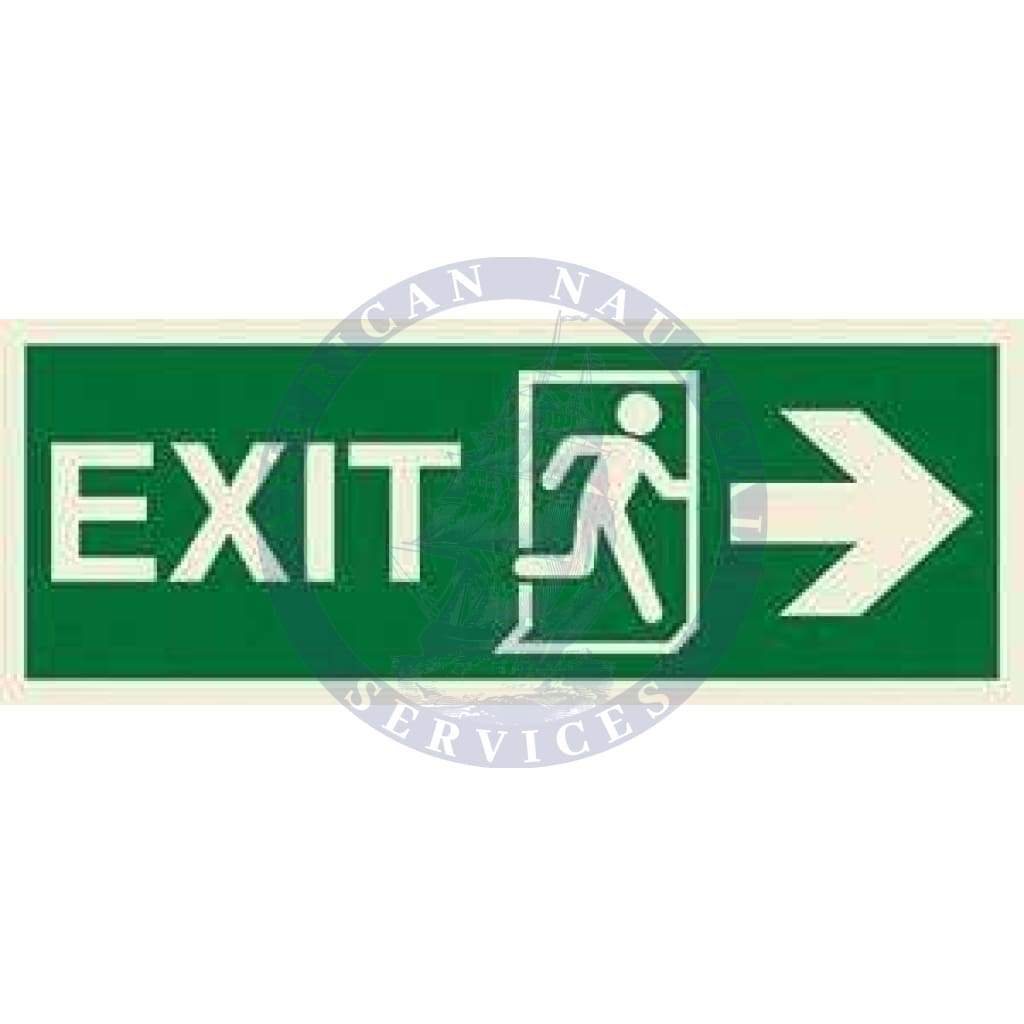

Marine Direction Sign: EXIT + Running man symbol + Arrow right
- Precio
- $6.95
- Tags: Direction Signs
Retiro disponible en 3311 S. Andrews Ave.
Normalmente está listo en 24 horas
Marine Direction Sign: EXIT + Running man symbol + Arrow right
Regulations
SOLAS 1974 Chapter III Regulation 11.5, Chapter II-2 Regulation 13.1.3 and Regulation 13.3.2.5.1 require all escape routes to be marked with photoluminescent signs or signs illuminated by emergency light or both. IMO Poster: Life Saving Appliances Symbols (2006 Edition) indicates that exit signs should comprise of a 'running man' pictogram, an arrow and the word 'Exit'.
Explanation of Escape Routes
Passengers and crew of any ship must be aware of the evacuation routes available to them from within the vessel. There are usually two types of evacuation routes namely primary and secondary. Primary Evacuation Route is the quickest and easiest way to the assembly/muster station or survival craft. Secondary Evacuation Route is a specially designated exit route for use when the Primary route is unusable.
Installation on Board
Primary escape routes should be marked with signs comprising of the 'running man' pictogram, a direction arrow and the word 'Exit'. Secondary escape routes should employ similar signs but with the wording 'Exit for emergency use only' and broken lined arrows. This convention is under review by the ISO working group but at present we are unable to offer further guidance until ratification by IMO.
Signs should be positioned approximately 1700 mm from deck level for normal direction marking and not more than 300mm from deck level for LLL systems. Where possible, signs at doors or hatches should be positioned above the door so that the sign is still visible when the door or hatch cover is open. Direction signs over doors should be limited to either a sign containing an upward pointing arrow, indicating the escape route continues through the door, or to the 'running man' pictogram plus the word 'Exit' indicating that the door is the final exit.
Frequency of marking is almost impossible to define accurately, as the final decision rests with the surveyor accepting the route marking, however, the following points should be adhered to:
1. Every change of direction should be marked with the appropriate sign.
2. Signs in an alley or corridor should be spaced at intervals no greater than the maximum viewing distance of the sign employed.
3. When in public or communal areas, an 'Exit' sign should be within a 360* field of view.
Where more appropriate (e.g. crew accommodation and machinery spaces), escape routes may be marked with the muster/assembly or embarkation station direction signs. Whatever type of sign is employed to mark the escape route, the route should always lead to either a muster/assembly station or an embarkation station which should be identified by the appropriate sign.






